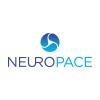
Transcranial Electrical Neuromodulation for Suppressing Epileptiform Discharges
EpilepsyThis study examines the safety and feasibility of suppressing epileptic discharges through inducing long term depression of the epileptic focus with transcranial electrical neuromodulation.

RNS® System Epilepsy PAS
EpilepsyThe purpose of the study is to follow patients with partial onset seizures prospectively over 5 years in the real-world environment to gather data on the long-term safety and effectiveness of the RNS System at qualified CECs by qualified neurologists, epileptologists, and neurosurgeons trained on the RNS System.

Feasibility Study on LITT for Medical Refractory Epilepsy
EpilepsyMulticenter, open-label, prospective designed study to characterize the performance of brain laser interstitial thermal therapy (LITT) ablation using the Monteris NeuroBlate System for the treatment of drug-refractory medial temporal lobe epilepsy in subjects who are candidates for LITT surgery.

PRX-00023 Therapy in Localization-Related Epilepsy
EpilepsyEpilepsy2 moreBackground: - The brain chemical serotonin helps nerve cells communicate. Previous research suggests that serotonin activity may be lower in brain areas where seizures start, and that increasing activity at the serotonin receptor site on nerve cells may help prevent seizures. Researchers are interested in determining whether the experimental medication PRX-00023, which increases the activity of serotonin receptors, can reduce seizure frequency in people whose seizures are not well-controlled on antiseizure medication. PRX-00023 has not previously been studied in people with epilepsy and has not previously been given to people taking antiseizure medication at the same time. Objectives: - To evaluate the effectiveness of PRX-00023 in reducing the frequency of epileptic seizures that start from only one part of the brain. Eligibility: - Individuals between 18 and 65 years of age who have frequent epileptic seizures even after trying at least two different standard anti-seizure medications (either at the same time or one after the other). Design: The study requires 9 outpatient visits to the NIH Clinical Center over a 34-week period. Individuals who choose to participate in additional studies may be an inpatient during some of these visits. Participants will be screened with a medical history and physical examination, blood and urine samples, ECG, EEG, neuropsychological studies, imaging studies, including PET and MRI scans Participants will have a 6-week observation and evaluation period before starting the study medication. Participants who have at least four seizures during this period will be eligible for the treatment portion of the study. All participants will receive either PRX-00023 or a placebo pill twice daily for 12 weeks, and will have regular clinic visits with blood samples and imaging studies. After the 12-week period, participants will have a 2- to 3-week washout period without any study medication. Participants will then have another study medication period, and will receive the opposite pill (PRX-00023 or placebo) from the one taken in the first treatment phase. Participants will continue to have regular clinic visits with blood samples, ECG, EEG and neuropsychologicalstudies. One month after the end of the second study medication phase, participants will have a followup evaluation with a physical examination, blood tests, ECG, EEG, mood and neuropsychological tests. Outcome measures: The primary outcome measure for drug efficacy will be: Mean difference in seizure frequency comparing the active and placebo periods. Secondary outcome measures for efficacy will be: Proportion of patients with greater than or equal to 50% lower seizure rate on PRX-00023 than placebo Hamilton Depression and Anxiety Rating scales Performance on mood and neuropsychological testing scales

Long-term, Open-label Safety Extension Study of Retigabine/Ezogabine in Pediatric Subjects (>= 12...
EpilepsyThe purpose of this study is to evaluate the long-term safety and tolerability of retigabine/ezogabine as an adjunctive treatment in subjects with either partial onset seizures (12 to < 18 years old) or Lennox-Gastaut Syndrome (12 to <30 years old) who have participated in a previous ("parent") study.

Effect on Anxiety in Partial Epilepsy Patients Treated With Pregabalin
EpilepsyComplex PartialTo prospectively demonstrate the superior anxiolytic effect of high dose pregabalin (PGB) therapy (450 mg/day) compared to low dose PGB therapy (150 mg/day) in subjects with medically refractory partial epilepsy not fully controlled despite treatment with 1-2 concomitant antiepileptic drugs (AEDs).

Study to Evaluate the Long-term Safety and Tolerability of USL261 in Patients With Seizure Clusters...
EpilepsyThe purpose of this study is to examine the long-term safety and tolerability of USL261 in the treatment of seizure clusters.

Clobazam Use in Epilepsia Partialis Continua - Pilot Study
Epilepsia Partialis ContinuaKojewnikov's Epilepsy1 moreThe purpose of this study is to evaluate whether clobazam, brand name Onf®, is more effective as an adjunctive or monotherapy in terminating Epilepsia Partialis Continua (EPC) than either lorazepam and/or clonazepam.

A Study to Investigate the Effect of ICA-105665 in Photosensitive Epilepsy Patients
EpilepsySubjects with epilepsy with a documented photoparoxysmal response to intermittent photic stimulation (IPS) will participate. Four subjects will be enrolled at each dose level and will receive a single dose of placebo and a single dose of ICA-105665 during the study, each followed by intermittent photic stimulation. The effects of ICA-105665 on the photoparoxysmal electroencephalography (EEG) response of each group will be reviewed before the dose is selected for each subsequent group of subjects.

HEAD-Study Optimizing the Treatment of Children With BECTS
EpilepsyRolandicThe investigators hypothesize that Levetiracetam is as effective as Sulthiame in the treatment of children with BECTS. Patients entering the HEAD-Studie are either treated with Leveitracetam or Sulthiame over a 6 months period. Patients are equally randomised to one of the two treatment regimens. Administration of medication as blinded capsules.
